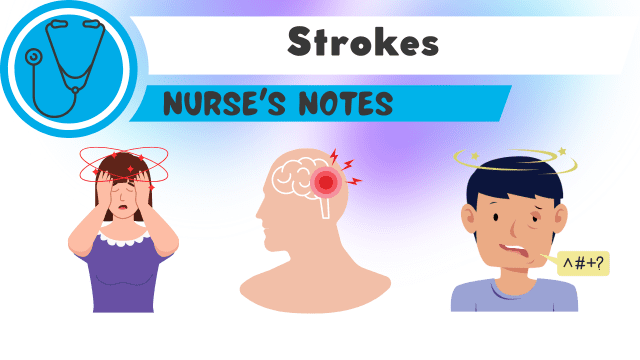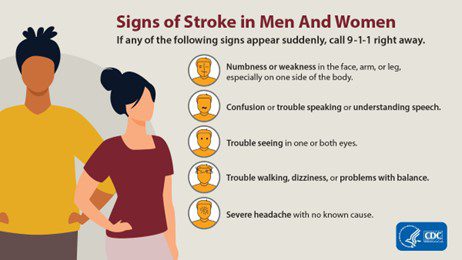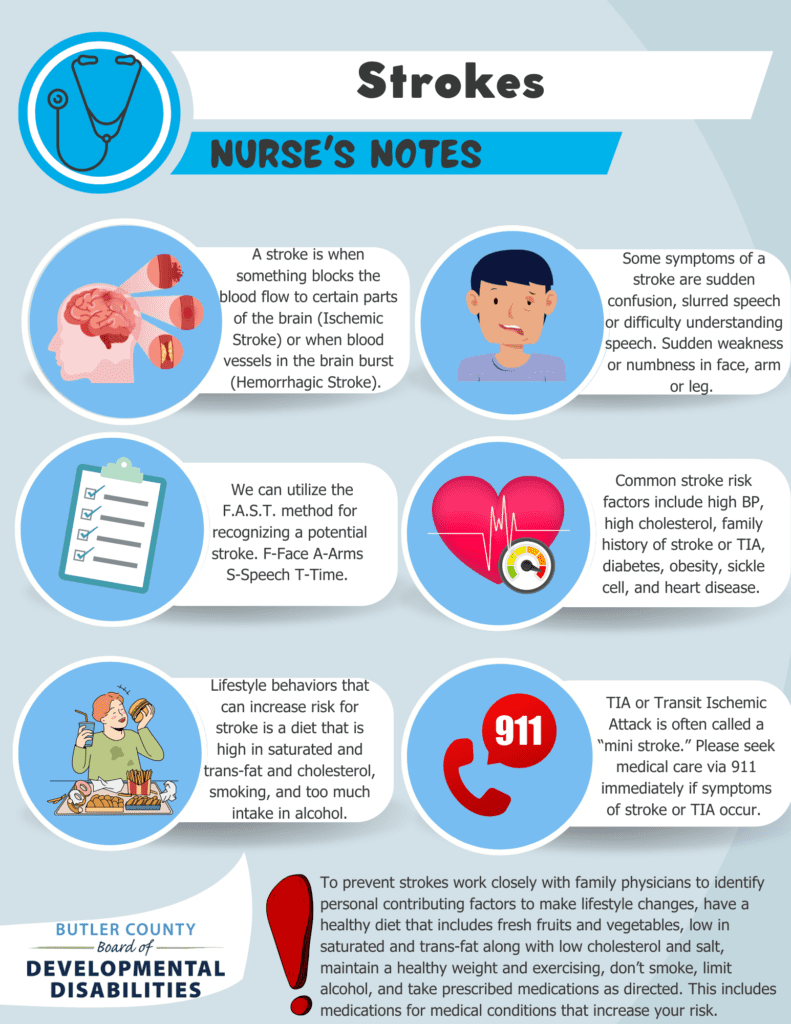
Nurse’s Notes: Strokes
Every 3 months, our staff nurses share important health updates. This month, our nurses are talking about Strokes.
What is a stroke?
A stroke is when something blocks the blood flow to certain parts of the brain (Ischemic Stroke) or when blood vessels in the brain burst (Hemorrhagic Stroke). This causes that part of the brain to be either damaged or die. This can ultimately lead to long term damage, disability or even death.
TIA or Transit Ischemic Attack is often called a “mini stroke.” It is important to understand that this is often a warning sign for a potential future stroke. Please seek medical care via 911 immediately if symptoms of stroke or TIA occur.
What are the symptoms of stroke in both men and women?
- Sudden confusion, slurred speech, or difficulty understanding speech.
- Sudden weakness or numbness in the face, arm, or leg. This commonly occurs on one side of the body.
- Sudden vision disturbances in one or both eyes.
- Sudden changes in gait or ambulation, dizziness, loss of balance.
- Sudden severe headache.

You can utilize the F.A.S.T. method for recognizing a potential stroke.
F- Face
Ask the individual to smile. Does one side of the face droop?
A- Arms
Ask the individual to raise both arms out front. Does one arm appear lower than the other?
S- Speech
As the individual basic questions? Is their speech slurred? Are they confused with answers?
T- Time
Time is of the essence in a potential stoke victim. Be sure to write down the time when symptoms began and report to EMT’s or emergency provider. Call 911 immediately if any of the symptoms above are present.
What are the Stroke risk factors?
Many common medical conditions can increase your risk of having a stroke, however they can be treated. Common risk factors include high blood pressure, high cholesterol, family history of stroke or TIA, diabetes, obesity, sickle cell, and heart disease.
Lifestyle behaviors can also increase risk for stroke and those can include a diet that is high in saturated and trans-fat and cholesterol, intaking foods with high salt, smoking, and too much intake in alcohol.
How can you prevent a Stroke?
- Work closely with family physicians to identify personal contributing factors to make lifestyle changes.
- Have a healthy diet that includes fresh fruits and vegetables, low in saturated and trans-fat along with low cholesterol and salt.
- Maintain a healthy weight and exercising.
- Don’t smoke.
- Limit alcohol.
- Take prescribed medications as directed. This includes medications for medical conditions that increase your risk, blood pressure, cholesterol, diabetes, and heart disease.

References
